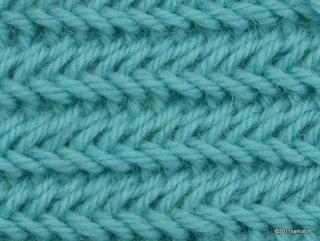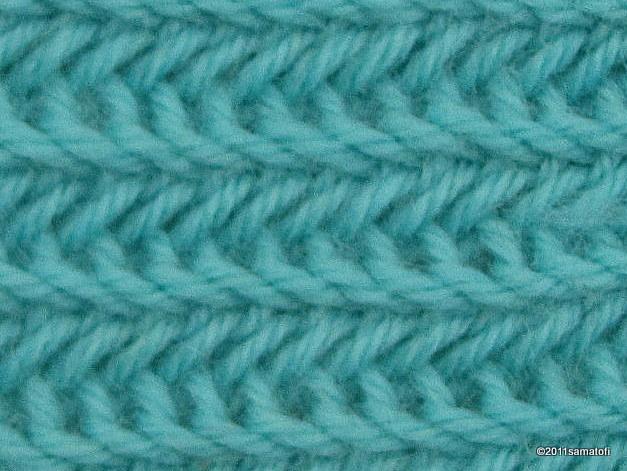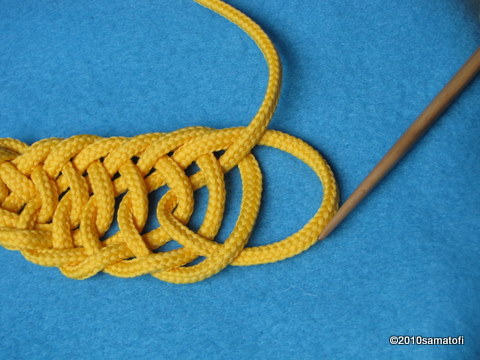Mammen Stitch (Finnish Stitch 1+2)
Hansen's Notation UOO/UUOO F1 or F2
In Finland this stitch has been used at least in Savitaipale.
Elsewhere this stitch is known as Mammen Stitch (F2) or Korgen Stitch (F1)
Video links below photo
 |
 |
Mammen Stitch
Finnish Stitch 1+2
front side
|
Mammen Stitch
Finnish Stitch 1+2
reverse side
|
 |
Mammen Stitch
Finnish Stitch 1+2
|
Video (linki) - includes how to start and make the first loops; joining a chain of stitches to a circle; second row and connection stitches (F1/F2); using thin yarn and tensioning the stitches onto the needle; how to make a round start; voiceover both in English and Finnish.
Video (linkki) - short video; only the stitch itself.
In Finland this stitch type has been used at least in Savitaipale (Kaukonen, 1960), for thin church mittens. In the NBA ethnological collections (Finland) there's also a sample made with stitch, 9616:6.
A man's grave was found in 1868 in Denmark, at Mammen (link). The man was buried in winter 970-971 CE, wearing expensive costume, with decorations including among other things tablet woven bands, and nalbinding with silver and gold threads. This stitch was used in Egypt already about 400-600 CE.
Based on the Danish find in Mammen, this stitch type is commonly known by the name Mammen Stitch (F2), but also name Korgen Stitch is used (F1; Schmitt). Odd Nordland (1961) mentions this stitch was used in Korgen, Norway, in 1950's.
This nalbinding stitch is known at least by these names:
Mammen (Decker, 2004; Mellgren, 2008; Overby, 2014)
Korgen (Schmitt, 1997, 2000; 2006)
Börstil 1, Uppsala (Rothquist-Ericsson, 2003)
Variant B, Variant 4 (Westman, 2001)
To-plukk (Stoltz, 2010)
Half-Finnish (Puolisuomalainen) (Pasanen, 2015)
|